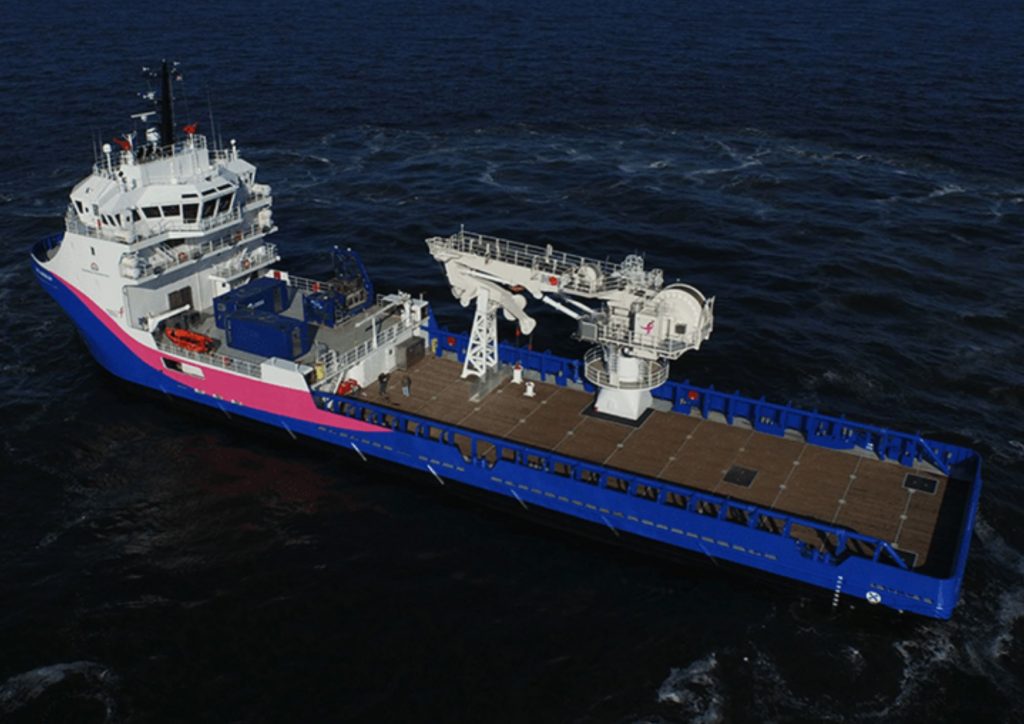Ms. Tree has departed from Port Canaveral for the final time and is being retired from SpaceX operations. Ms. Chief is expected to follow shortly.
SpaceX has not attempted to catch a fairing half in a considerable amount of time. Whilst they have proven the catching concept to work a number of times now (The statistics, according to my records, are 7 catches for Ms. Tree and 2 for Ms. Chief) it has not proven to be as reliable as SpaceX engineers likely imagined. The venture is also a rather high-risk affair. There are a number of well-documented failures that highlight these issues. Examples include fairing halves being dragged out of the net by an unreleased parafoil and cracking on the ocean surface – rendering them unusable, and a fairing falling through the net and sliding down onto the deck of Ms. Tree. The design of the catching arms was also seemingly susceptible to poor weather in the Atlantic Ocean. The two ships found themselves in for repair rather frequently and Ms. Tree once returned from the PSN-6 mission with two missing arms that were lost at sea in bad weather.

Several months ago I put out a tweet hailing the fairing recovery program as a success, and I stand behind that. The parafoil system that brings each fairing half down to the ocean in a controlled manner seems to work extremely well. SpaceX has had much better luck at recovering halves that land on the water instead of in a net.
The two Dragon recovery ships GO Searcher and GO Navigator have proven themselves to be rather good at recovering fairing halves recently, having snagged 16 halves over the last two years. With this method, something SpaceX recently dubbed ‘Wet Recovery’, the fairing is allowed to gracefully land on the water and then a recovery ship swoops in and lifts it out. Ms. Tree and Ms. Chief were both fitted with secondary ‘scoop nets’ that allowed them to lift a fairing from the water after a failed catch attempt.
Meanwhile, in Port Canaveral. Ms. Tree was practicing scooping out fairings from the water (using the dock) before getting photobombed by USNS Newport.
— Chris B - NSF (@NASASpaceflight) February 11, 2021
Just your average Thursday.
Edited clips (rewind below for the whole show).
➡️https://t.co/lzdAJXnIy6 pic.twitter.com/3LE2OLQxK8
Throughout 2020, SpaceX was not always attempting to catch the fairing half and instead opting to go straight for wet recovery, something that has proven to be so reliable that it has led to multiple missions launching with a flight-proven fairing.
With a lack of catching reliability, it seems as if SpaceX has finally abandoned the concept of catching fairing halves and opted to conduct wet recovery by default. GO Searcher and GO Navigator took on the responsibility of fairing recovery from March 2021 and Ms. Tree and Ms. Chief were slowly de-rigged of all SpaceX equipment – a process that took well over a month to complete. SpaceX made significant upgrades to both ships, including the catching structure, computer systems, communications, and rigging.
GO Searcher and GO Navigator are primarily Dragon recovery ships and were needed for training exercises from early April. With Ms. Tree and Ms. Chief undergoing the decommissioning process, SpaceX chartered a much larger ship – Shelia Bordelon. At 250ft long and in a striking pink and blue color scheme, the ship is certainty as noticeable as you would want a SpaceX recovery ship to be. Shelia was quick into action and brought back two fairing halves from the Starlink V1 L22 mission with the help of the 50-ton crane that the vessel is equipped with.

However, Shelia Bordelon looks like a temporary arrangement. The ship is primarily designed for subsea exploration and even has an underwater ROV. With 25% of the valuable deck space dedicated to ROV equipment, the vessel seems to only be able to fit two fairing halves onboard at once. With the rapid Starlink launch rate, SpaceX has moved towards double-stacking Starlink launches in quick succession with not enough time to sail back to Florida to unload and return to the LZ between missions. Between them, Ms. Tree and Ms. Chief were able to carry four fairing halves. It seems unlikely that SpaceX would want to lose this capacity.
There is a gap in fairing recovery missions coming up whilst Starlink missions are halted for the Crew-2 launch. Dragon missions have no fairing equipped so a rare multiple-week gap is set to open up that could potentially allow for SpaceX to send Shelia Bordelon home and bring in a larger, more appropriate, fairing recovery ship. We will have to wait and see what this ship may look like but sadly I suspect it won’t be getting a net anytime soon.
Follow Gavin on Twitter: @SpaceXFleet
Update 2021-04-07: Elon Musk has confirmed on Twitter that fairing catching has been abandoned. All future recoveries will be from the water.
Fairing Recovery Missions
SpaceX has been sending ships downrange since 2016 to attempt recovery of payload fairings, with varying success. We’ve collated a list of all these attempts and their outcomes.

